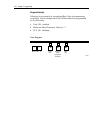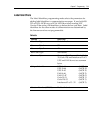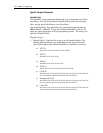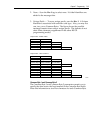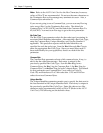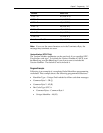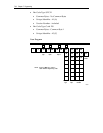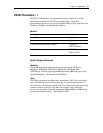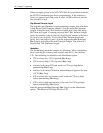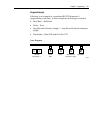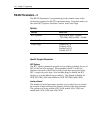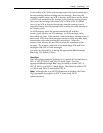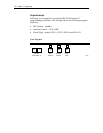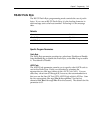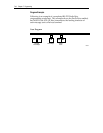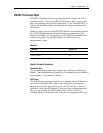
7-40 Chapter 7: Programming
When you apply power to an NCR 7875-2000, the reset function checks
the RS-232 Communications Parity programming. If the selection is
None, it is ignored and Odd parity is used. If Odd or Even is selected,
that selection is used.
Stop Bits and Character Length
The Stop Bits and Character Length parameter contains four selections:
1 Stop Bit and 7-Bit Character Length, 1 Stop Bit and 8-Bit Character
Length, 2 Stop Bits and 7-Bit Character Length, and 2 Stop Bits and 8-
Bit Character Length. Choosing no parity and 7-Bit Character Length
causes the scanner/scale to send two stop bits; the scanner/scale must
also receive two stop bits. If you select 8-Bit Character length and
parity, only one stop bit is sent. Scan the appropriate Hex 0 through
Hex 3 tag to set the Stop Bits and Character Length. The default is 1
Stop Bit and 7-Bit Character Length.
Handshake
The Handshake parameter contains six selections. When considering
these, note that the scanner/scale controls only RTS, it can monitor
CTS. The following list identifies each Handshake option.
•
RTS is always low, CTS is ignored (Hex 0 tag).
•
RTS is always high, CTS is ignored (Hex 1 tag).
•
Scanner/scale raises RTS and waits for CTS to go high before
transmitting (Hex 2 tag).
•
Scanner/scale raises RTS before transmitting and ignores the state
of CTS (Hex 3 tag).
•
RTS is always low and scanner/scale waits for CTS to go high
before transmitting (Hex 4 tag).
•
RTS is always high and scanner/scale waits for CTS to go high
before transmitting (Hex 5 tag).
Scan the appropriate Hex 0 through Hex 5 tag to set the Handshake
option. The default is RTS High Wait for CTS.



